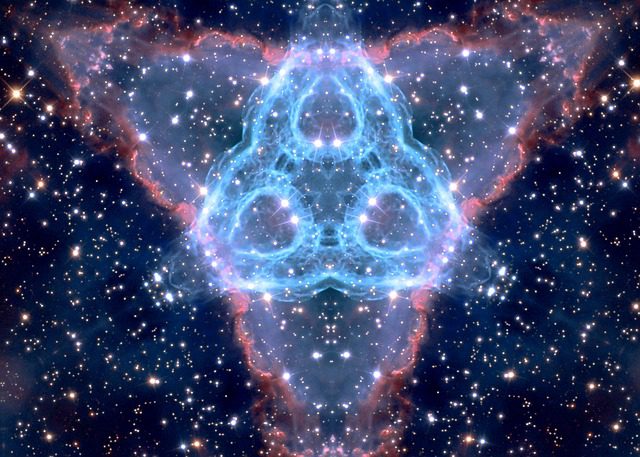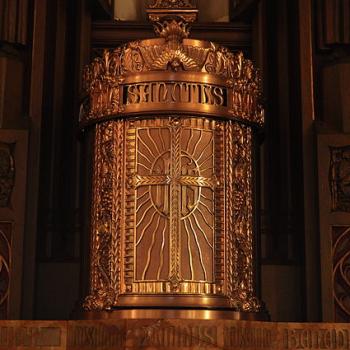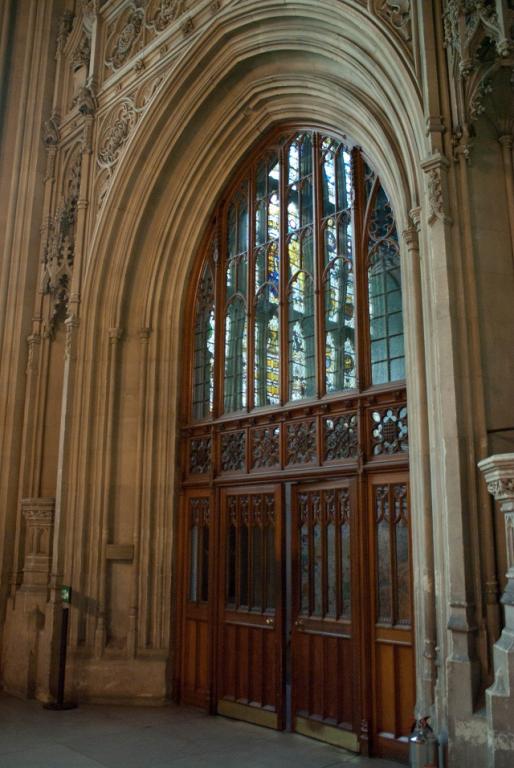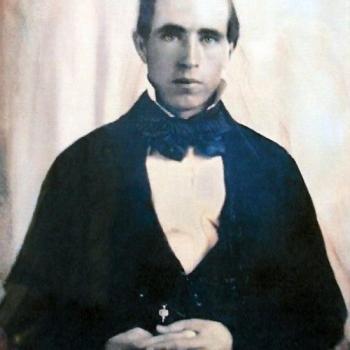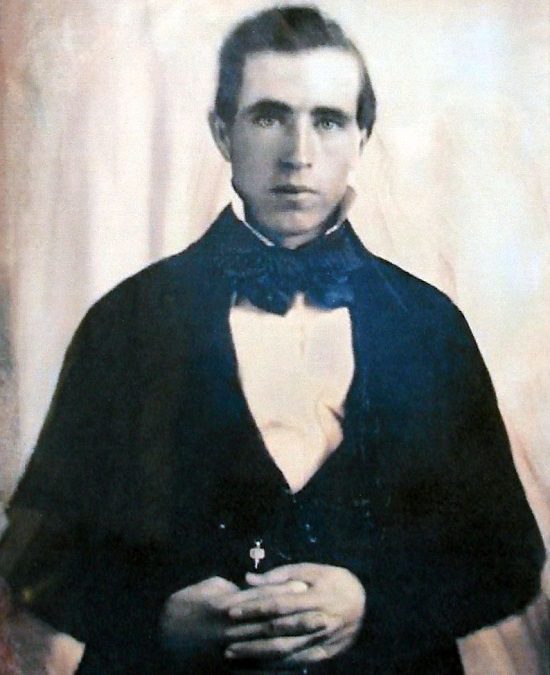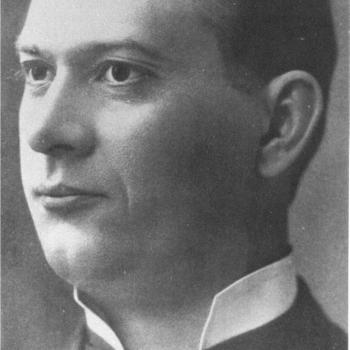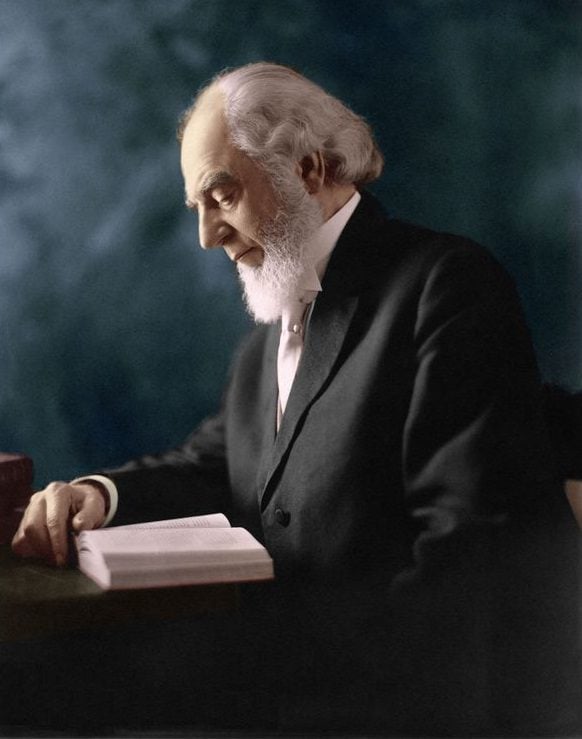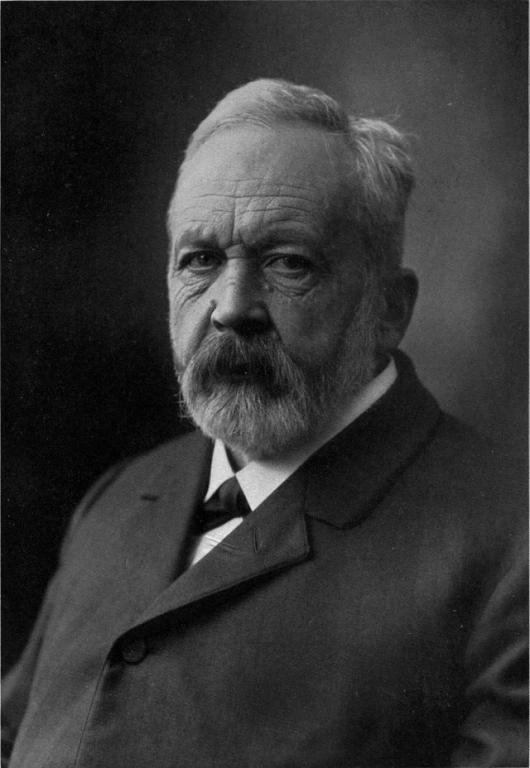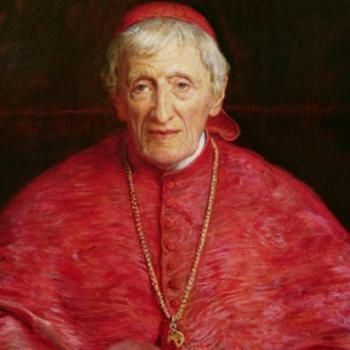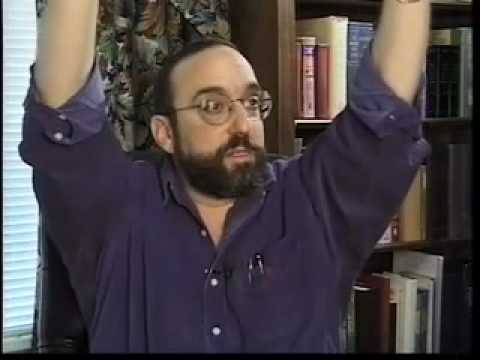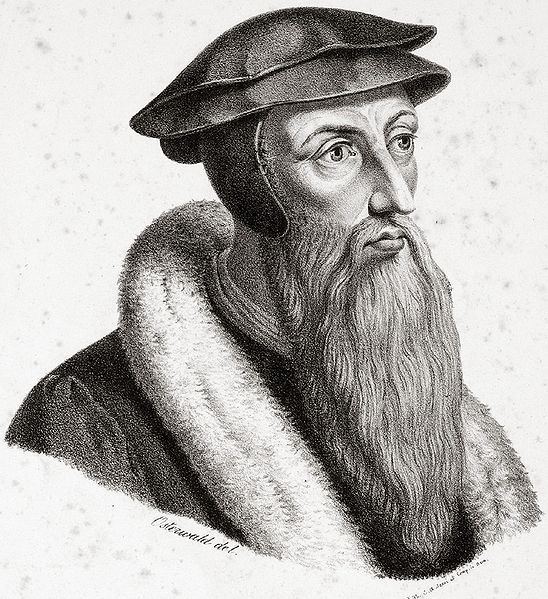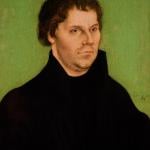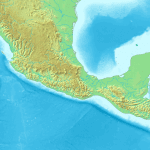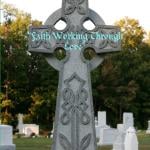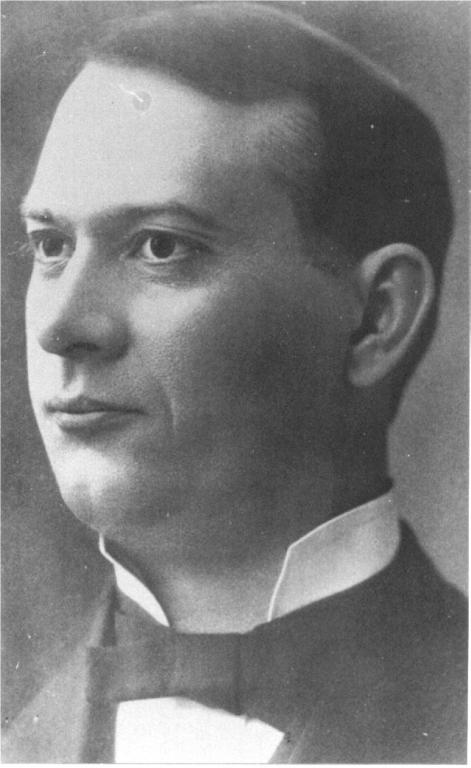
Jehovah’s Witnesses are not Christians. They deny that Jesus is God, and the Holy Trinity.
Part Two
*
Go to Part One
***
Scripture verses are from the Authorised Version (King James Version) of the Bible, unless otherwise noted. All primary works from the Jehovah’s Witnesses were published by the Watchtower Bible and Tract Society, Brooklyn, New York.
TABLE OF CONTENTS
PART ONE
I. History of the Jehovah’s Witnesses
II. Watchtower Authority
III. False Prophecies and Contradictory Date-Setting
IV. The Scholarly Incompetence and Dishonesty of the Watchtower
PART TWO
V. Christology
VI. The Trinity and the Holy Spirit (Theology / Pneumatology)
VII. Salvation (Soteriology)
VIII. Death and the Soul (Eschatology / Anthropology)
IX. The Doctrine of Hell (Eschatology)
X. Assorted Secondary Beliefs
***
V. Christology
— see my compilation of biblical proofs for the Deity of Christ —
1. Watchtower View of Jesus
. . . he is God’s “first-born” Son. This means that he was created before the other sons of God’s family. He is also God’s “only-begotten” Son, in that he is the only one directly created by Jehovah God; all others came into existence through him as God’s Chief Agent. (The Truth That Leads to Eternal Life, 1968, 47). . . Michael (who is the resurrected Jesus Christ) . . . (You Can Live Forever in Paradise on Earth, 1982, 21)
He is a “mighty god,” but not the Almighty God, who is Jehovah. (The Truth Shall Make You Free, 1943, 47)
Jehovah’s first creation was his “only-begotten Son” . . . This one, “the first-born of all creation,” was used by Jehovah in creating all other things. (Aid to Bible Understanding, 1971, 390-391)
. . . God’s first creation . . . the sole direct creation of his Father . . . (Insight on the Scriptures, 1988, vol. 2, 52-53)
JWs believe in a Big God, Jehovah, and a little god, Jesus. This is polytheism. The Bible teaches trinitarian monotheism: one God in three Persons. This will be shown beyond doubt, as we proceed.
2. Examination of Ten “Proof Texts” Used by JWs
*Proverbs, Chapter 8
This chapter, about “wisdom,” is taken to be a reference to Jesus, based on 1 Corinthians 1:24: “. . . Christ the power of God, and the wisdom of God.” Proverbs 8:22 is cited:
The LORD possessed (RSV: created) me in the beginning of his way, before his works of old. Jehovah himself produced me as the beginning of his way, the earliest of his achievements . . . (NWT)
The reply is so simple it can easily be overlooked. If Jesus was not eternal, then neither would God’s power and wisdom be eternal. Note, however, that the next verse in the NWT has “wisdom” saying: “From time indefinite I was installed . . . ” (KJV, NASB: everlasting). The Hebrew word here is olam (Strong’s word #5769), which Gesenius’ Hebrew-Chaldee Lexicon of the OT defiones as “time before the creation of the world (i.e., eternity), Prov 8:23.” This word is used in describing Jesus at Micah 5:2, the well-known messianic prophecy regarding His birth, but most importantly, it is used in the most explicit way in describing God the Father’s (“Jehovah’s”) eternity, in verses such as Psalms 41:13, 90:2, 93:2, 106:48, Isaiah 40:28 (all, time indefinite in the NWT). If the word means “eternal and uncreated” when applied to Jehovah, then it must mean the same when applied to Jesus.
That is assuming, however, that “wisdom” in Proverbs 8 is referring to Jesus in the first place. I would argue that it is an example of the poetic devise ofpersonification of an abstract, non-personal concept (common in Hebrew poetry). This is easily shown by the reference to wisdom as “it” in 8:1-3 of the NWT (most translations use she). In Proverbs 9:1-4, the NWT refers to “wisdom” as “it” and then “she”; Proverbs 1:20-2:11 uses “it” in the same way. JWs do not deny the maleness of personhood of Jesus, so this “proof” is demolished.
The Watchtower actually agrees with this interpretation in one place, while asserting the proof text against Jesus in others:
. . . it is not unusual in the Scriptures for something that is not actually a person to be personalized or personified. Wisdom is personified in the book of Proverbs (1:20-33; 8:1-36); and the feminine pronominal forms are used of it in the original Hebrew, as also in many English translations . . . Wisdom is also personified at Matthew 11:19 and Luke 7:35. (Insight on the Scriptures, 1988, vol. 2, 1019)
Unfortunately, once again, even though the Watchtower stumbled upon a truth here, they use it to support a falsehood. The above citation occurred in the article on “Spirit” — with regard to the personal attributes so often used to describe the Holy Spirit in the Bible. It is stated that these are merely instances of personification, so that the Holy Spirit need not be regarded as a Divine Person (as in orthodox Christian trinitarian theology).
Isaiah 9:6
For unto us a child is born, unto us a son is given: and the government shall be upon his shoulder: and his name shall be called Wonderful, Counseller, The mighty God, the everlasting Father, The Prince of Peace.
JWs maintain that because Jesus is called “Mighty” instead of “Almighty,” and no article appears oin the Hebrew text, that therefore Jesus is merely “a god.” In Isaiah 10:21, however, no article appears, and Jehovah is definitely referred to (cf. Is 65:8-9, Hosea 6:1, 14:1) as “Mighty God.” The Hebrew for “Mighty God” in Is 9:6 and 10:21, El Gibbor (Strong’s word #410/1368) is also used in reference to Jehovah (with an article) in Jeremiah 32:18, Deut 10:17, and Neh 9:32. In Isaiah, El usually denotes YHWH (LORD or Jehovah). When it does not do so, it is used to describe created idols (e.g., Is 44:10,15,17, 46:6). Additionally, JWs must explain “Eternal Father” (cf. Is 57:15). Unless they accept Jesus as God, JWs must become either idolaters or polytheists. Both positions are, of course, condemned in Sacred Scripture.
John 1:1
In the beginning was the Word, and the Word was with God, and the Word was God.
The NWT rendering of “a god” is impossible — which objection has been dealt with in Section IV, Part 2. Let’s accept for the sake of argument, however, the JW scenario of a “Big God and little god” and see how this squares with the biblical teachings on God’s nature and monotheism. Many verses clearly teach the latter (one real God and no real “little gods”: see, e.g., Deut 6:4, Is 37:16, 43:10, 44:6,8, 45:5-6,21-22, 46:9, 1 Tim 2:5). JWs say that “gods” do indeed exist, citing 2 Corinthians 4:4, where Satan is called “the god of this world.” The true sense of “god” in this verse is, ironically, revealed in the Watchtower’s own literature:
Anything that is worshipped can be termed a god inasmuch as the worshipper attributes to it might greater than his own and venerates it. (Aid to Bible Understanding, 1971, 665)
Thus, “a god” is not “God” by nature and essence, but only because people worship it (in other words, they think something is a “god” which in fact is not, which is idolatry). This is the biblical sense of other gods besides the true and only God:
GALATIANS 4:8 Howbeit then, when ye knew not God, ye did service unto them which by nature are no gods. (NWT: “by nature are not gods”)
1 CORINTHIANS 8:5-6 For though there be that are called gods, whether in heaven or in earth, (as there be gods many, and lords many,) (6) But to us {there is but} one God, the Father, of whom {are} all things, . . . (NWT: “. . . those who are called ‘gods’ . . . there is actually to us one God . . . “)
ISAIAH 37:19 And have cast their gods into the fire: for they {were} no gods, but the work of men’s hands, wood and stone: therefore they have destroyed them. (cf. Is 44:10,15,17, 46:6, Acts 14:11, 28:6)
Beyond these considerations, two other verses utterly destroy the JW view of Jesus as a “little god”:
DEUTERONOMY 32:39 See now that I, {even} I, {am} he, and {there is} no god with me: . . . (NWT: “no gods together with me”)
2 KINGS 17:35 . . . the Lord . . . charged them, saying, Ye shall not fear other gods, nor bow yourselves to them, nor serve them, nor sacrifice to them: (NWT: very similar)
And Whom must we serve?:
ROMANS 2:11 . . . serving the Lord. (NWT: “slave for Jehovah”)
But what about Colossians 3:24?:
. . . for ye serve the Lord Christ. (NWT: “slave for the Master, Christ”)
Thus, we see another absolute contradiction, between 2 Kings 17:35 and Colossians 3:24, if Jesus is a “little god,” as JWs hold. In trinitarianism, there is no problem with synthesizing these passages at all. The Watchtower’s theology turns Scripture into an irrational potpourri of contradictions.
Begotten / Monogenes
This term (Strong’s word #3439) is applied to Jesus (God’s only-begotten son,” etc.) five times in the NT (Jn 1:1,14,18, 3:16,18, 1 John 4:9). JWs, in opposition to all the Greek lexicons, hold that “begotten” means “created.” Rather than relying on “Arian amateur grammarians,” as the great Bible scholar F.F. Bruce described the JWs, let’s see what A.T. Robertson, the premier Greek scholar of his time, wrote about John 1:18:
The best old Greek manuscripts . . . read monogenes Theos (God only begotten) which is undoubtedly the true text. (Word Pictures in the NT, Nashville: Broadman Press, 1932, vol. 5 of 6, 17)
The NWT rendering, “only-begotten god,” is in opposition to all reputable translations. W.E. Vine is also very clear about the meaning of this text:
. . . does not imply a beginning of His Sonship . . . in the sense of unoriginated relationship . . . Christ . . . eternally is the Son. He, a Person, possesses every attribute of pure Godhood. (An Expository Dictionary of New Testament Words, Old Tappan, New Jersey: Fleming H. Revell, 1940; under “Only-Begotten”)
The literal meaning of monogenes is “unique; only member of a kind” (see lexicons by Liddell & Scott, Bauer, Arndt, & Gingrich, Thayer, Kittel, etc.). If God has a “unique” Son, that Son partakes of Godhood, just as a human son partakes of humanness. This is clearly brought out in John 5:18:
Therefore the Jews sought the more to kill him, because he . . . said also that God was his Father, making himself equal with God.
John 14:28 (Philippians 2:6-8)
1 Corinthians 11:3
1 Corinthians 15:28
. . . my father is greater than I (NWT: “the Father is greater than I am”). . .the head of Christ {is} God (same in NWT)
And when all things shall be subdued unto him, then shall the Son also himself be subject unto him that put all things under him, that God may be all in all. (similar in NWT)
Jesus’ subjection to the Father is seen in such verses as John 14:28, 1 Corinthians 11:3, and 1 Corinthians 15:28. These verses and others have been utilized historically by heretics such as the Arians (of whom Jehovah’s Witnesses are a revival), as well as non-trinitarian theists such as Unitarians, to “prove” that Jesus is lesser than the Father and therefore not God in the flesh. Upon closer inspection, however, a clearer picture emerges. John 14:28 is to be understood in light of passages such as Philippians 2:6-8, which show us that Christ in John 14:28 was speaking strictly in terms of his office as Messiah, which entailed a giving up, not of the Divine Nature, but of certain prerogatives of glory and Deity which are enjoyed by the Father:
Let this mind be in you, which was also in Christ Jesus: (6) Who, being in the form of God, thought it not robbery to be equal with God: But made himself of no reputation, and took upon him the form of a servant, and was made in the likeness of men: And being found in fashion as a man, he humbled himself, and became obedient unto death, even the death of the cross. (NWT: “existing in God’s form”)
The Greek word for form above is morphe (Strong’s word #3444). Vine states:
It includes the whole nature and essence of Deity, and is inseparable from them. (An Expository Dictionary of New Testament Words, Old Tappan, New Jersey: Fleming H. Revell, 1940; under “Form”)
Likewise, A.T. Robertson writes:
Morphe means the essential attributes as shown in the form . . . Here is a clear statement by Paul of the deity of Christ. Of what did Christ empty himself? Not of his divine nature . . . Undoubtedly Christ gave up his environment of glory. (Word Pictures in the NT, Nashville: Broadman Press, 1932, vol. 4 of 6, 444-445)
Christ subjected Himself to the Father in order to undertake His role as the Incarnate Son and Mediator between God and man (1 Tim 2:5). Similarly, one might say that “the President of the United States is a greater man than I am,” but this would not mean he was necessarily a better man. In any event, he is still a man like us. Since Jesus is still God, even while “humbling” Himself (Phil 2:8), Scripture also indicates that the Father is, in a sense, “subject” to the Son:
JOHN 16:15 All things that the Father hath are mine: therefore said I, that he shall take of mine, and shall shew {it} unto you.
JOHN 16:23 And in that day ye shall ask me nothing. Verily, verily, I say unto you, Whatsoever ye shall ask the Father in my name, he will give {it} you.
When the Father is called the “head” of the Son (1 Cor 11:3), this also does not entail any lessening of the equality between the Son and the Father. The Bible also talks about wives being subject to their husbands (1 Pet 3:1,5), even while the two are equals (Gal 3:28, Eph 5:21-22), and indeed, “one flesh” (Mt 19:5-6). Likewise, one Person of the Godhead can be in subjection to another Person and remain God in essence and substance (Phil 2:6-8). Luke 2:51 says that Jesus was “subject” to Mary and Joseph. Yet no orthodox Christian of any stripe would hold that Jesus was lesser in essence than His earthly parents! The same Greek word for “subject” in Luke 2:51 (hupotasso: Strong’s word #5293) is used in 1 Cor 15:28, and in 1 Pet 2:18 below. Besides, submissiveness and servanthood is not presented as a sign of weakness in Scripture. Quite the contrary:
1 PETER 2:18 Servants, {be} subject to {your} masters with all fear; not only to the good and gentle, but also to the froward. (NWT: “servants, be submissive to your masters”)
MATTHEW 23:11 But he that is greatest among you shall be your servant. (similar in NWT)
The word for “greatest” here is meizon, the same word used in John 14:28. Thus, any notion that submissiveness is a lessening of equality is absolutely unscriptural. Meizon (Strong’s word #3187) means “comparatively greater,” not “qualitatively greater” or greater in essence or purpose.
Likewise, in 1 Cor 15:28, the subjection spoken of is that of the Son as incarnate, not the Son as Son in essence. While this verse tells us that God will be “all in all,” Colossians 3:11 tells us that “. . . Christ {is} all, and in all.” Thus, Jesus’ office as Messiah and Mediator will cease in time, but not His Godhood, since Scripture teaches that He will be “all in all” just as His Father is. The JW exegesis here and so often, exhibits the same old tactic and shortcoming: a profound misunderstanding of the meanings of Greek words, biblical; phraseology, and systematic theology and exegesis (the comparing of Scripture with Scripture. Charles Hodge, the brilliant 19th-century Presbyterian theologian and commentator, wrote on 1 Corinthians 15:28, in his Exposition of First Corinthians (pp. 333-334):
The word “Son” here designates, not the Logos as such, but the Logos as incarnate . . . When the Bible says . . . the Son is subject to or inferior to the Father, we know that it is consistent with their equality . . . the subjection spoken of, is . . . not of the Son as Son, but of the Son as incarnate; and the subjection itself is official and therefore perfectly consistent with equality of nature.
Colossians 1:15
Who is the image of the invisible God, the firstborn of every creature: (NWT: “firstborn of all creation”)
The Greek for “firstborn” is prototokos (Strong’s word #4416), which means “preeminence” and “eternal preexistence,” according to Greek lexicons. It does not mean “first-created.” Apart from being untrue linguistically, this heretical interpretation is contradicted in the next two verses, which inform us that Christ “created all things,” and that He “is before all things.” JWs try to escape that clear indication by adding the qualifying word, “other” — but (unfortunately for them) “other” is not in the Greek text. The Hebrew usage of “firstborn” is also instructive, since it illustrates its meaning as “preeminent.” David is called “firstborn” in Ps 89:27, not because he was the literal first child of Jesse (for he was the youngest), but in the sense of his ascendancy to the kingship of Israel. The Watchtower understands this with regard to that verse:
David, who was the youngest son of Jesse, was called by Jehovah the “first-born,” due to Jehovah;s elevation of David to the preeminent position in God’s chosen nation. (Aid to Bible Understanding, 1971, 584)
Likewise, Jeremiah 31:9 refers to Ephraim as the firstborn, whereas Manasseh was the first child born (Gen 41:50-52). The nation Israel is called “my firstborn” by God (Ex 4:22). The Jewish rabbinical writers even called God the Father Bekorah Shelolam, meaning “firstborn of all creation,” that is, the Creator. This is precisely how St. Paul uses the “firstborn” phraseology in Col 1:15. The Greek word for “first-created” is protoktistos. But Paul uses prototokos, which Vine defines as follows:
. . . expressing his priority to, and preeminence over, creation . . . He himself produced creation. (An Expository Dictionary of New Testament Words, under “Firstborn”)
And A.T. Robertson states:
The use of this word does not show what Arius argued, that Paul regarded Christ as a creature like “all creation” . . . Paul takes both words to help express the deity of Jesus Christ in his relation to the Father as eikon (Image) and to the universe as prototokos (First-born). (Word Pictures in the NT, Nashville, vol. 4 of 6, 477-478)
Greek scholar Marvin Vincent also concurs:
“First-born” points to eternal preexistence . . . We must carefully avoid any suggestion that Christ was the first of created things, which is contradicted by the following words: “in Him were all things created.” (Word Studies in the NT, Grand Rapids, Michigan: Eerdmans, 1946; orig. 1887; vol. 3 of 4, 468)
If JWs attempt to argue that image (Greek, eikon, Strong’s word #1504), “proves” that Jesus is lesser than God, they will again find themselves at odds with all Greek lexicons and dictionaries. For example, W.E. Vine:
Christ is the visible representation and manifestation of God to created beings; the likeness expressed in this manifestation is involved in the essential relations in the Godhead . . . “he that hath seen Me hath seen the Father,” John 14:9. (An Expository Dictionary of New Testament Words, under “Image”)
The unbiblical JW doctrine of Jesus as “Chief Agent” of all creation (rather than co-creator with the Father and Spirit), is rendered null and void by three verses:
ISAIAH 44:24 Thus saith the Lord, thy redeemer, and he that formed thee from the womb, I {am} the Lord that maketh all {things}; that stretcheth forth the heavens alone; that spreadeth abroad the earth by myself; (NWT: “I, Jehovah, am doing everything, stretching out the heavens by myself, laying out the earth. Who was with me?”)
MALACHI 2:10 Have we not all one father? hath not one God created us? . . . (NWT: “is it not one God that has created us?”)
JOB 9:2, 8 . . . how should man be just with God? . . . Which alone spreadeth out the heavens . . . (NWT: “stretching out the heavens by himself”)
Revelation 3:14
. . . the beginning of the creation of God; (NWT: “. . . creation by God”)
In the Foreword of the Kingdom Interlinear Translation (1969, 10), it is stated, “To each major word we have assigned one meaning.” Let’s trace, then, the Greek word for beginning, arche (Strong’s word #746). We find that in Rev 21:6 Jehovah calls Himself the “beginning [arche] and the end.” So if Jesus is a created being because of arche, Jehovah must be, too, since the description is applied to both. The Greek scholars are unanimous in their interpretation of arche and this verse: one of the very favorites of JWs. Abbot Smith’s Manual Greek Lexicon (p. 62) defines the word as, “uncreated principle, the active cause of creation, Rev. 3:14.” Joseph Thayer, in his Greek-English Lexicon of the NT (p. 77) gives as its meaning, “origin, active cause,” as does Vine (under, “Beginning”), Liddell and Scott (p. 121), and Bauer, Arndt, & Gingrich (pp. 111-112). A.T. Robertson states:
Not the first of creatures as the Arians held . . . but the originating source of creation. (Word Pictures in the NT, vol. 6 of 6, 321)
We even get our word, architect from arche, which makes its meaning clear. At least 20 English translations use an unambiguous terminology which brings out the specific meaning of Revelation 3:14:
Williams, Beck, Goodspeed, Moffatt, NRSV: origin of God’s creation
Knox: the source from which God’s creation began
NAB, REB, CEV: the source of God’s creation
Wuest: the originating source of the creation of God
Living Bible: the primeval source of God’s creation
Jerusalem: the ultimate source of God’s creation
NEB:the prime source of all God’s creation
Barclay: the moving cause of God’s creation
Amplified: the Origin and Beginning and Author of God’s creation
TEV: The origin of all that God has created
NIV: the ruler of God’s creation
Weymouth: the Beginning and Lord of God’s creation
Jay Green Interlinear: the Head of the creation of God
Basic English: the head of God’s new order
MLB (in notes): he was the source of creation
Jesus, here as elsewhere, is revealed as Creator in Scripture, not as a creature. Otherwise, the verses about creation become nonsensical.
3. The Deity of Jesus Christ: 21 Biblical Proofs in the Bible (and NWT)*
—verses pertaining to Jehovah are listed before the slash; those about Jesus are listed after it —
*
i) Who is the Savior? Is 32:11 / 1 Jn 4:14
ii) Who is the “Lord of lords”? Dt 10:17 / Rev 17:14
iii) Who is “First and Last” and “Alpha and Omega” and “Beginning and the End”? Is 44:6, Rev 1:8, 21:5-6 / Rev 1:17, 3:14, 22:13
(Rev 22:16 identifies the speaker as Jesus. In Rev 22:12 and 22:20, Jesus says He is coming “quickly,” as indicated by 22:20: “come, Lord Jesus” [cf. Mt 16:27]. Rev 22:12-13 is applied to Jesus by The Watchtower, 1 October 1978, p. 15)
iv) Who Will Judge Mankind? 1 Sam 2:10, Ps 50:6, Ecc 3:17, Is 33:22 / Jn 5:22, Acts 10:38,42, 2 Tim 4:1, Rev 6:16
v) Who Abolished Death? Is 25:6,8 / 2 Tim 1:10
vi) Who Will “Render According to Deeds”? Ps 62:12, Is 40:10 / Mt 16:27, Rev 22:12
vii) Who Will Separate Sheep and Goats? Ezek 34:17 / Mt 25:32
viii) Who is the Shepherd? Ps 100:3 / Jn 10:14-15
ix) Who Receives Glory Forever? Gal 1:4-5 / 2 Pet 3:18
x) Who Receives Our Spirits? / Who is Prayed to? Lk 23:46 / Acts 7:59
(JWs admit that Stephen prayed to Jesus: WT, 1 February 1959, p. 96)
xi) Whose Name is “Called Upon”? Acts 2:21 / 1 Cor 1:2
xii) Who is All-Powerful? Gen 18:14 / Phil 3:20-21
xiii) Who Possesses God’s Glory? Is 42:8 / Jn 17:5
xiv) Who Does Not Change? Mal 3:6 / Heb 13:8
xv) “No one can snatch out of my hand” Dt 32:39 / Jn 10:28
xvi) Who Sustains the Creation? 1 Tim 6:13 / Heb 1:2-3
xvii) Who Disciplines Us? Prov 3:12 / Rev 3:19
xviii) Whose Kingdom? Jn 3:5, Acts 1:3, Rom 14:17, a Cor 4:20 / Jn 18:36, Eph 5:5, Col 1:13, 2 Tim 4:1
xix) Whose Kingdom Will Never End? Dan 4:34 / Dan 7:13-14
xx) Who is King of the Earth? Is 33:22, Micah 4:7 / Lk 1:31-33, Rev 17:14
xxi) Who Sits on God’s Throne? Rev 7:10 / Rev 7:17, 22:1
4. The Primacy of Jesus and His Name in the NT
*We find the phrase, “the name of the Lord” about 50 times in the Old Testament and eleven times in the New Testament. In the NT, “name of God” is found seven times, “the name of the Father” eight times, but the “name” as referring to Jesus occurs at least 91 times. Jesus is the fullest revelation of God, and the One through Whom the Father is now speaking (Heb 1:1-2). Hence, the overwhelming emphasis on His name in the NT.
PHILIPPIANS 2:9-11 Wherefore God also hath highly exalted him, and given him a name which is above every name: (10) That at the name of Jesus every knee should bow, of {things} in heaven, and {things} in earth, and {things} under the earth; (11) And {that} every tongue should confess that Jesus Christ {is} Lord, to the glory of God the Father.
ISAIAH 45:23 I have sworn by myself, the word is gone out of my mouth {in} righteousness, and shall not return, that unto me every knee shall bow, every tongue shall swear.
Salvation and Faith in Jesus’ Name: Mt 12:21, Jn 1:12, 2:23, 3:18, Acts 4:10,12, 10:43, 22:16, Rom 10:9, 1 Cor 6:11, 1 Jn 3:23, 5:13.
Jesus: the Most Important Name (not Jehovah): 1 Cor 1:2, Eph 1:20-21, Phil 2:9-11 (cf. Is 45:23), 2 Thess 1:12, 1 Jn 3:23, Rev 2:3,13.
Of Whom Should We Be “Witnesses”?: ACTS 1:8 But ye shall receive power, after that the Holy Ghost is come upon you: and ye shall be witnesses unto me both in Jerusalem, and in all Judaea, and in Samaria, and unto the uttermost part of the earth. (Jesus speaking – see 1:1,11)
Jesus Talks About the Importance of His Name (not Jehovah’s): Mt 7:22, 10:22, 12:15-21, 18:5,20, 19:29, 24:9, 28:19-20.
Christians Are Baptized in Jesus’ Name: Mt 28:19, Acts 2:38, 8:16, 10:48, 19:5, 1 Cor 1:13,15.
Christians Suffer For Jesus’ Name: Acts 5:41, 9:16, 15:26, 21:13.
Christians Gather in Jesus’ Name: Mt 18:20, 1 Cor 5:4.
Men Healed in Jesus’ Name: Acts 3:6,16, 4:10,30.
Christians Speak, Teach & Preach in Jesus’ Name: Lk 24:47, Acts 4:17-18, 5:28, 8:12, 9:27,29.
Christians Are Named After Jesus Christ: Acts 11:26, 1 Pet 4:16.
Remission of Sins in Jesus’ Name: Acts 10:43, 1 Jn 2:12.
Jesus is Called “Lord of Lords”: Rev 19:16.
Christians Are to Give Thanks & Praise in Jesus’ Name: Eph 5:20, Heb 13:15.
Christians Are to Do All Things in Jesus’ Name: Col 3:17.
5. Worship of Jesus: NT TeachingProskuneo
Proskuneo (Strong’s word #4352) is used 22 times in the NT to refer to worship of the Father, five times of divine worship without specification, and 14 times in reference to worship of Jesus. The NWT renders proskuneo as “worship” when it applies to Jehovah, but as “obeisance” when it applies to Jesus Christ.
Father and Son to be Equally Honored
JOHN 5:23 That all {men} should honour the Son, even as they honour the Father. He that honoureth not the Son honoureth not the Father which hath sent him.
Creature Worship
The worship of angels is condemned in the NT (Col 2:18), and angels refuse worship (Rev 19:10 and 22:8-9; cf. 18:1). Peter refuses worship (Acts 10:25-26), as do Paul and Barnabas (Acts 14:11-15).
Hebrews 1:6 and Angel Worship
And again, when he bringeth in the firstbegotten into the world, he saith, And let all the angels of God worship him. (NWT replaces worship with do obeisance to)
Here the angels are worshiping Jesus (proskuneo), in direct violation of Jesus’ command:
LUKE 4:8 And Jesus answered and said unto him, Get thee behind me, Satan: for it is written, Thou shalt worship the Lord thy God, and him only shalt thou serve.
Thus, angels are guilty of sacrilege. Secondly, if Christ was created, they are guilty of the sin of creature worship. Thirdly, if Jesus is Michael the Archangel, they are guilty of worshiping another angel (Neh 9:6: “Thou, even thou, art Lord alone; . . . and the host of heaven worshippeth thee.”). This verse, along with Hebrews 1:4-5,7-8,13, proves that Jesus is not Michael, as JWs claim. Also, Jude 9 tells us that Michael didn’t have authority to rebuke Satan, which Christ certainly possessed (Mt 4:4,7,10).
1 Corinthians 1:2
. . . with all that in every place call upon the name of Jesus Christ our Lord, (similar in NWT)
Thayer, in his Greek Lexicon (p. 239) states that this expression means, “to invoke, adore, worship the Lord, i.e., Christ.” Joel 2:32 reads, “. . . whosoever shall call on the name of the LORD shall be delivered . . . ” (NWT: “Jehovah”). This verse is quoted in Acts 2:21, using the same word for “call” as in 1 Corinthians 1:2:epikaleomai (Strong’s word #1941). Romans 10:12 uses this word also: “. . . the same Lord over all is rich unto all that call upon him” (NWT: similar).
Worship of Jesus in the Book of Revelation
Proskuneo is also explicitly defined, both in Revelation 4:10-11 and 7:11-12, since both passages define the worship of God by virtue of describing the words directed to God in praise and worship (“. . . worshipped God, saying . . .”). Every Greek word (eleven in all) applied to God the Father in this fashion in Revelation is applied to Jesus as well (eucharistia is used of Christ in Colossians). One word, ploutos, is applied to Jesus only in Revelation, and to the Father in Romans 11:33. There can be no stronger evidence that Jesus is to receive worship equally with His Father, thus making Him equal to the Father (Mt 4:10), and no less than fully God:
Greek Word English Word (KJV/NWT) Applied to the Father Applied to Jesus
Pipto Fell down before Revelation 4:10, 7:11 Revelation 5:8
Eulogia Blessing 5:13, 7:12 5:12-13
Doxa Glory 4:9,11, 5:13, 7:12 5:12-13
Sophia Wisdom 7:12 5:12
Time Honour 4:9,11, 5:13, 7:12 5:12-13
Dunamis Power 4:11, 7:12 5:12
Kratos Power 5:13 5:13
Ischus Might / Strength 7:12 5:12
Axios Worthy 4:11 5:12
Lambano Receive 4:11 5:12
Ploutos Riches (Romans 11:33) Rev 5:12
Eucharistia Thanksgiving 4:9, 7:12 (Colossians 2:6-7)
Furthermore, by strong implication, Revelation 7:11-12 can be said to apply equally to Jesus as well, since the “Lamb” is mentioned in the immediate context (7:10,17). Rev 7:11 states, “. . . fell before the throne . . . and worshipped God,” while Rev 7:17 informs us of, “the Lamb which is in the midst of the throne . . .”
Despite this overwhelming evidence of the deity of Christ, the Watchtower attempts to explain away the import in its commentary on Revelation, Then is Finished the Mystery of God (1969). Jesus supposedly “receives” accolades from Jehovah as a “reward” (p. 33) — a theme nowhere found in Rev 5:11-14. This blasphemous and blind denigration of Jesus results in such illogical statements as:
They will fall down and worship before the throne of Jehovah. They will acknowledge his Lamb. (Then is Finished the Mystery of God, 1969, 5; my emphasis)
6. Worship of Jesus: Contradictory JW Doctrinal Stands
*Acceptance of Worship of Jesus
He never reproved any for acts of worship offered to himself. (WT, October 1880, p. 144 in reprint)The purposes of this Society are . . . public Christian worship of Almighty God and Jesus Christ; to arrange and hold . . . assemblies for such worship. (Charter of the Watch Tower Society of Pennsylvania, Article II, 1884)
We believe our Lord while on earth was really worshiped, and properly so. (WT, 15 July 1898, p. 2337 in reprint)
Christ to be worshiped as a glorious spirit. (Make Sure of all Things, 1953, 85)
Positions on Creature Worship
If the rendering “worship” is preferred, then it must be understood that such “worship” is only of a relative kind. (WT, 15 November 1970, 704; concerning Hebrews 1:6)
*
Bowing before men or angels as “relative” worship forbidden. (Make Sure of all Things, 1953, 178)
Worship to be given only to Jehovah (Matt. 4:10, Ex. 20:2-3, Deut. 6:13-15, 10:20-21, Nahum 1:2) . . . Creature Worship Forbidden (Rev. 19:10, Rom. 1:24-25, Acts 12:21-23) . . . Angels Not to be Worshipped (Rev. 22:8-9, Col. 2:18). (Make Sure of all Things; Hold Fast to What is Fine, 1965, 135, 138)
Rejection of Worship of Jesus
No distinct worship is to be rendered to Jesus Christ now glorified in heaven. (WT, 1 January 1954, 31)He is a god . . . but he did not worship himself and he did not teach his disciples to worship him. (WT, 15 July 1959, 421)
VI. The Trinity and the Holy Spirit (Theology / Pneumatology)
*— see my compilation of biblical proofs for the Trinity —
1. Christian Definition of the Holy Trinity
There are three Persons in the Godhead: the Father, the Son (Jesus), and the Holy Spirit, and these three Persons are one God: the same in substance, essence, and purpose; equal in power and glory. All three have existed eternally in relationship with each of the others, and are not merely modes of one person.
Christians believe in the Trinity, not because they fully understand it (any more than eternity or omniscience or many other difficult Christian concepts), but because this is how God has revealed Himself in the Bible.— see The Athanasian Creed —
2. JW View of the Holy Trinity
. . . three gods in one . . .Satan is the originator of the “trinity” doctrine.
. . . complicated, freakish-looking, three-headed God. (Let God be True, 1946, 100,101,102)
This doctrine was unknown to the . . . Christian apostles . . . the early Christians . . . did not believe that God is a “Trinity.”
. . . the word “trinity” does not appear in the Bible.
Neither the word nor the idea is in God’s Word, the Bible. The doctrine did not originate with God. (The Truth That Leads to Eternal Life, 1968, 22 [2], 25)
3. “The Word Trinity Isn’t in the Bible” Argument
*The very word
Jehovah isn’t in the Bible, either, since Hebrew didn’t have the “J” and “V” sounds; nor are the favorite JW terms, “theocracy” or “organization.” Concerning the latter word,
The Watchtower of 1 May 1981 (p. 31) argued:
It is straining the point to argue that God has no organization in view of the fact that the original words meaning “organization” in ancient languages do not occur in the inspired Hebrew and Greek Scriptures.
JWs thus refute themselves on this point. Trinity is merely the descriptive word for the concept which is clearly deduced from Scripture, as will now be shown.
4. 15 Trinitarian Biblical Proofs (NWT)
*
—Verses pertaining to Jehovah are listed before the slash; those about Jesus are listed after it and before the straight line [ | ]. Verses pertaining to the Holy Spirit appear after the straight line —
*
i) Who Searches all Minds and Hearts? 1 Chron 28:9, Jer 17:10 / Rev 2:18,23 | 1 Cor 2:10
ii) Whose Spirit is the Holy Spirit? Rom 8:9 / Rom 8:9, Gal 4:6, Phil 1:19
iii) Who Pleads For Us? / Rom 8:34 | Rom 8:26-27
iv) Who Raised Jesus? Gal 1:1 / Jn 2:19-21 | Rom 8:11
v) Who Gives Us Words to Speak as a Testimony? / Lk 21:12-15 | Lk 12:11-12
vi) Who Dwells in Believers? God the Father and Jesus: Jn 14:23 | Rom 8:11
vii) Whose Temple Are We? 1 Cor 3:16-17 / | 1 Cor 3:16, 6:19
viii) Who Sanctifies Us? 1 Thess 5:23 / Heb 13:12 | 1 Pet 1:2
ix) Who is the Creator? Gen 1:1, Is 44:24, Eph 3:9 / Jn 1:3, Heb 1:8,10 | Job 33:4
x) Acts 5:3-4 “. . . why has Satan emboldened you to play false to the holy spirit? . . . You have played false, not to men, but to God.”
xi) Matthew 12:31-32 “. . . Blasphemy against the spirit will not be forgiven.” (Only God can be blasphemed).
xii) Matthew 28:19 “. . . baptizing them in the name of the Father and of the Son and of the holy spirit.”
xiii) Acts 28:25-26 “The holy spirit aptly spoke through Isaiah the prophet . . . saying, ‘Go to this people and say: “By hearing, you will hear but by no means understand . . . ” ‘ ”
Isaiah 6:8-9 “. . . the voice of Jehovah saying: ‘Go, and you must say to this people, “Hear again and again, O men, but do not understand . . . ” ‘ ”
xiv) 1 Corinthians 12:4-6,11 “Now there are varieties of gifts, but there is the samespirit; and there are varieties of ministries, and yet there is the same Lord; and there are varieties of operations, and yet it is the same God who performs all the operations in all persons . . . But all these operations the one and the same spiritperforms.”
xv) 2 Corinthians 3:17 “Jehovah is the Spirit . . . ”
5. Echod: The Composite Unity of God
*The Hebrew word
echod (Strong’s word #259) is the sort of “oneness” which describes God. It is used in Gen 1:5, in which day and night are united as “day one.” In Ezra 2:64,
echod is used in reference to an assembly of 42,360! In Num 13:23 it describes “one” cluster of grapes. It denotes a
composite unity. The Hebrew word
yachid (Strong’s word #3173) represents absolute, indivisible oneness. It appears 12 times in the OT, but never as a description of God.
GENESIS 1:26 And God said, Let us make man in our image, after our likeness: . . .
*
GENESIS 3:22 And the Lord God said, Behold, the man is become as one of us, to know good and evil: . . .
GENESIS 2:24 Therefore shall a man leave his father and his mother, and shall cleave unto his wife: and they shall be one [echod] flesh.
6. JW Teaching on the Holy Spirit: God’s “Active Force”
. . . God’s holy spirit is not a person but is God’s active force by which he accomplishes his purpose and executes his will . . . It may thus be compared to radio waves that can receive a message from a person speaking into a microphone and transmit the message to persons a distance away, in effect, “speaking” the message by a radio loudspeaker. (Aid to Bible Understanding, 1971, 1543)
The Bible gives several instances of the Spirit speaking (e.g., Jn 16:13 and Acts 8:29). Yet JWs believe that Jehovah is speaking and that the Spirit is only the transmitter. Why, then, don’t these verses state that God spoke, rather than the Spirit? For, when we talk on the phone, we never say that “the sound waves said . . . ” We always say, “so and so said . . . ” It’s absurd to attribute speaking to an inanimate “active force,” because speaking is always attributed to a personality.
Ironically, JWs believe that Satan is a person, for the same reasons that Christians believe in the Personhood of the Holy Spirit:
Can an unintelligent “force” carry on a conversation with a person? Also, the Bible calls Satan a manslayer, a liar, a father (in the spiritual sense), and a ruler . . . Only an intelligent person could fit all those descriptions . . . Every quality, every action, which can indicate personality is attributed to him in language which cannot be explained away! (WT, 8 December 1973, 27)
7. 30 Personal Attributes of the Holy Spirit in the NWT
1) Helps: Jn 14:16,26, 15:26, 16:7, Rom 8:26, 1 Jn 2:1.
2) Glorifies: Jn 16:13-14.
3) Can be Known: Jn 14:17.
4) Gives Abilities: Acts 2:4, 1 Cor 12:7-11.
5) Referred to as “He”: Jn 16:13; cf. 16:7-8.
6) Loves: Rom 15:30.
7) Guides: Jn 16:13.
8) Comforts: Acts 9:31.
9) Teaches: Lk 12:12, Jn 14:26.
10) Reminds: Jn 14:26.
11) Bears Witness: Jn 15:26, Acts 5:32, Rom 8:16.
12) Has Impulses: Jn 16:13.
13) Hears: Jn 16:13.
14) Leads: Mt 4:1, Acts 8:39, Rom 8:14.
15) Pleads: Rom 8:26-27.
16) Longs (Yearns): Jas 4:5.
17) Wills: 1 Cor 12:11.
18) Thinks: Acts 15:25,28.
19) Sends: Acts 13:4.
20) Dispatches: Acts 10:20.
21) Impels: Mk 1:12.
22) Speaks: Jn 16:13-15, Acts 8:29, 10:19, 11:12, 13:2.
23) Forbids: Acts 16:6-7.
24) Appoints: Acts 20:28.
25) Reveals: Lk 2:26, 1 Cor 2:10.
26) Calls to Ministry: Acts 13:2.
27) Can be Grieved: Eph 4:30; cf. Is 63:10.
28) Can be Insulted: Heb 10:29.
29) Can be Lied to: Acts 5:3-4.
30) Can be Blasphemed: Mt 12:31-32.
Furthermore, the absurdity of the notion of the Holy Spirit as an “active force” is made very obvious by substituting this definition in verses from the NWT which themselves use “holy spirit”:
Jn 14:26 . . . the active force . . . will teach you all things . . .
Acts 8:29 The active force said to Philip . . .
Acts 13:4 . . . sent out by the active force . . .
Acts 15:28 For the active force and we ourselves have favored adding no further burden to you.
Acts 16:6 They were forbidden by the active force.
1 Corinthians 2:10 The active force searches all things.
2 Corinthians 3:17 Jehovah is the active force.
Eph 4:30 Do not be grieving God’s active force.
8. Deficiencies in the JW Doctrine of “Jehovah” (God the Father)
*Denial of God’s Omnipresence
The true God is not omnipresent, for he is spoken of as having a location. His throne is in heaven. (Aid to Bible Understanding, 1971, 1543). . . God . . . also has location so that Christ could speak of “going to his Father” . . . (Insight on the Scriptures, 1988, vol. 2, 1018)
Second President of the Watchtower J.F. Rutherford even went so far as to say that “the Pleiades is the place of the eternal throne of God” (Reconciliation, 1928, 14). Christians, on the other hand, have always believed that God is omnipresent.
Denial of God’s Omniscience
. . . Would not limiting God’s knowledge of the future undermine his almightiness?, you might ask. Not at all. (WT, 15 July 1984, 4-5)Is his exercise of foreknowledge infinite, without limit? . . . Or, . . . selective and discretionary, so that whatever he chooses to foresee and foreknow, he does, but what he does not choose to foresee or foreknow, he does not? . . . The argument that God’s not foreknowing all future events and circumstances in full detail would evidence imperfection on his part is, in reality, an arbitrary view of perfection. (Aid to Bible Understanding, 1971, “Foreknowledge,” 595)
Historic, orthodox Christianity has always held that God was omniscient.
Belief That God the Father Has a Body
God is a person with a spiritual body . . . They will then see God . . . and also be like him (1 Jn. 3:2). This, too, shows that God is a person, and that he has a body. (You Can Live Forever in Paradise on Earth, 1982, 36-37)This does not mean that God is an impersonal, bodiless force like the wind. (Insight on the Scriptures, 1988, vol. 2, 1018)
. . . there are also spiritual bodies . . . The bodies of spirit persons (God, Christ, the angels) are glorious. (Insight on the Scriptures, 1988, vol. 1, 348; also almost word-for-word in Aid to Bible Understanding, 1971, 247 [under “Body” in both sources] )
In contrast, the Bible (and historic, orthodox Christianity) teaches that God the Father is a Spirit, incorporeal (He has no body; is not physical), and is invisible, while God the Son, Jesus, took on flesh (the Incarnation), and is the revealer, or image of God. For proof texts of this, see the section in my paper on the Holy Trinity, “Jesus is the Image of the Invisible Father.”
MATTHEW 22:29 . . . Ye do err, not knowing the scriptures, nor the power of God.
VII. Salvation (Soteriology)
*1. JW Doctrine Concerning 144,000 in Heaven
*JWs maintain that only 144,000 believers will go to heaven, based on Revelation 14:1-3. This group is known as the “little flock” (Lk 12:32), and its ranks were filled by 1931. One knows if they are one of the 144,000:
. . . by means of the operation of God’s spirit, which implants and cultivates in them the hope of heavenly life. (The Truth That Leads to Eternal Life, 1968, 78)
The 144,000 are also the only ones who take communion: once a year (see: The Truth That Leads to Eternal Life, 1968, 80), the only persons who can be “born again,” and the sole beneficiaries of Christ’s work as mediator! The remaining JWs and faithful saints of the Old Testament times are a part of the “Great Crowd” or “earthly class,” who can achieve salvation as well, but who will live on the “Paradise earth,” or “New World,” rather than in heaven.
. . . only 144,000 persons will ever go to heaven. (From Paradise Lost to Paradise Regained, 1958, 186). . . only 144,000 chosen from among mankind over the past nineteen centuries would gain eternal life . . . the Bible holds out hope of eternal life under righteous conditions here on earth for all others who would become faithful servants of God . . . Such faithful servants of God as King David and John the Baptist did not go to heaven. (The Truth That Leads to Eternal Life, 1968, 79)
All faithful men and women who died before Jesus died had the hope of living again on earth, not in heaven. (You Can Live Forever in Paradise on Earth, 1982, 122)
Only Christ and his 144,000 spiritual brothers can be born again and receive the spirit baptism which is for body members only. (Make Sure of all Things, 1953, 33,49)
“Born again” means a birth-like realization of prospects and hopes for spirit life by resurrection to heaven. (Make Sure of all Things, 1953, 48)
This “great crowd” of people are not “born again,” nor do they need to be “born again” because they gain everlasting life on the earth. (WT, 15 November 1954, 682)
Jesus is the “mediator” only for anointed Christians. (WT, April Fool’s Day, 1979)
All Christian believers must be born again, or regenerated (Jn 3:3-6, 1 Jn 5:1; cf. Rom 8:8, 2 Cor 5:17). Most Christians believe this occurs during regenerative baptism; others make it a strictly spiritual experience of conversion, but all agree that it is absolutely necessary for every believer. The notion that Jesus Christ needed to be born again is blasphemous, and nowhere found in Scripture. Only sinners are in need of regeneration and a Savior, and since Jesus is the sinless Savior, it is ludicrous to speak of His being born again.
The doctrine of 144,000 has been arbitrarily developed from a few verses in Revelation, interpreted in a highly curious way. For the 144,000 are clearly Jews from the twelve tribes of Israel, which is explicitly stated in Rev 7:4-8. Rev 14:4 also informs us that the 144,000 are all unmarried virgin men! Scripture also teaches that there will be only one flock, not two (Jn 10:16), and that heaven and the New Earth will be one and the same (Rev 21:2,23-24, 22:3). As for the “great crowd,” the Bible states that they are before God’s throne in heaven (Rev 7:9; cf. 14:1-3). Rev 7:15 tells us that they serve God “in his temple” in heaven (see Rev 11:19, 14:17), and Rev 7:16 adds that “neither shall the sun light on them, nor any heat.” This also indicates that they are in heaven, according to Rev 21:23 and 22:5.
No one can be saved apart from Jesus’ mediatorial, redemptive, and atoning work on the Cross (1 Tim 2:4-5, Jn 3:15-18, Rom 3:10,20-28, 4:3-8,25, 5:1-2,18-19, 11:6, Phil 3:9, Gal 2:16, Eph 2:8-10,Titus 3:4-7). If salvation were possible apart from the unmerited work of Jesus Christ on our behalf, then He didn’t have to come to earth and die for us at all. He is no Savior at all if He only saves 144,000.
Moreover, there is no indication whatsoever in the communion passages (e.g., 1 Cor 11:23-24, Lk 22:14-20) that the Lord’s Supper, or Eucharist, was to be observed by a small “elite” group only. It is for all Christians. This is why the early Christians met (Acts 2:46: “breaking bread”). Jesus said:
. . . Except ye eat the flesh of the Son of man, and drink his blood, ye have no life in you. (John 8:53)Whoso eateth my flesh and drinketh my blood, hath eternal life; and I will raise him up at the last day. (John 8:54)
So how is it possible to attain eternal life even on the earth, without partaking of the Body and Blood of the Lord? Jesus says it is not possible. According to The Watchtower of 1 January 1995 (p. 15), only 8,617 (remaining from the 144,000) partook of communion in the yearly service of 1994.
Lastly, the idea that the Old Testament saints will not go to heaven is contradicted by Matthew 8:11 (the NWT adds an “s” to “heaven” in order to undercut the clarity of this verse), Hebrews 11:4-11,16 and Psalms 73:24. Matthew 5:12 teaches that all believers will go to heaven. It is expressly stated in Scripture that Elijah “went up by a whirlwind into heaven” (2 Kings 2:1,11).
2. JW View of the Value of Jesus’ Death
*The Watchtower believes in a “partial works” atonement by Jesus, whereby He made only a “down payment” for the “debt” of our sin. All Jesus did was buy back for us what Adam lost — no more, no less. Therefore, Jesus’ work was not completely sufficient for attainment of salvation and eternal life, as Christians believe.
. . . a ransom that exactly corresponded in value with what the sinner Adam lost for his descendants . . . the perfect Jesus as a human sacrifice did not outbalance in value the human perfection and life that Adam lost. (Things in Which it is Impossible For God to Lie, 1965, 232-233; emphasis in original)
Following this line of thought, the book, You Can Live Forever in Paradise on Earth (1982, p. 63) has a picture with Jesus and Adam balanced on a scale, with the caption: “Jesus was the Equal of the Perfect Man Adam.” A similar picture appeared in The Watchtower, 15 November 1982, p. 9. This is blasphemy, and is thoroughly refuted by the verses having to do with salvation and justification already recounted above, and many others, such as Jn 1:29, Romans 3:25, 5:9,14-17,20-21, 1 Cor 15:22,45, 2 Cor 5:21, Gal 1:4, 3:13, Col 2:13-14, 1 Pet 2:24, 1 Jn 1:7, 2:2, and Rev 5:9.
VIII. Death and the Soul (Eschatology / Anthropology)
1. JW Definitions and Explanations of Death and the Soul
Death
Death — loss of life; termination of existence; utter cessation of conscious intellectual or physical activity, celestial, human, or otherwise.(Make Sure of all Things, 1953, 86)
Simply stated, death is the opposite of life.
. . . after he died, Adam returned to that same state of nonexistence.
When a person is dead he is completely out of existence. (You Can Live Forever in Paradise on Earth, 1982, 76 [2], 88)
The dead are unconscious and lifeless in the grave. (The Truth That Leads to Eternal Life, 1968, 34)
The Soul
The human soul is man himself . . . it cannot be some shadowy thing that merely inhabits the body or that can exist apart from the person.. . . what happens to a soul at death? The Bible is very clear in stating that the soul is subject to death, saying: “The soul that is sinning — it itself will die.” (Ezek. 18:4,20) . . . Not once in any of its verses does the Bible say that either human or animal souls are immortal, deathless, cannot be destroyed or cannot perish. There are, however, dozens of scriptures that show that the soul can die or be killed (Lev. 23:30; Jas. 5:20) . . . when the person dies, it is the human soul that dies. (The Truth That Leads to Eternal Life, 1968, 36-37)
That the soul lives on after death is a lie started by the devil. (You Can Live Forever in Paradise on Earth, 1982, 89)
2. Christian Definitions of Death and the Soul
Death
The JW definition of death cannot be substantiated by any reputable Hebrew or Greek lexicons. Not a single Hebrew or Greek word in the Bible can be produced which means “annihilation” or “cessation of consciousness.” Death in the Scriptures is separation of the soul from the body (physical death), or separation from God for eternity (spiritual, or “second” death): see Rev 21:8 and 2:11. The most common Greek word in the NT for “death” is thanatos (Strong’s word #2288 — appears 119 times in KJV). W.E. Vine defines it as follows:
The separation of the soul (the spiritual part of man) from the body (the material part) . . . the separation of man from God. (An Expository Dictionary of New Testament Words, under “Death”)
Likewise, Joseph Thayer:
The death of the body, i.e., that separation . . . of the soul from the body by which the life on earth is ended. (Greek-English Lexicon of the NT, 282)
The primary OT words for “death” are maveth (Strong’s word #4194 — 159 times in KJV) and muth (Strong’s word #4191 — 817 times in KJV). They both mean exactly the same thing as thanatos, as can be found in any Hebrew lexicon, OT commentary, etc.
The Soul
The primary Greek word for “soul” in the NT is psuche (Strong’s word #5590 — 103 times in KJV). As for its definition, Thayer’s Greek-English Lexicon of the NT, would be typical of any language work:
1. Breath; a. The breath of life; the vital force which animates the body; b. Life; c. That in which there is life; a living being; a living soul; 2. The soul; a. The seat of the feelings, desires, affections, aversions, (our soul, heart, etc.); b. The (human) soul in so far as it . . . can attain its highest end and secure eternal blessedness, the soul regarded as a moral being, designed for everlasting life; c. The soul as an essence which differs from the body and is not dissolved by death.(Greek-English Lexicon of the NT, 677)
We note, then, that psuche has many specific meanings in Scripture, with one very broad general meaning. JWs have erred in making one specific usage (1.c. above, as used in 1 Cor 15:45: a quote of Gen 2:7; Acts 2:41-43, 27:37, Rev 16:3, etc.) paramount. This is a typical Watchtower tactic: to simplify a word or concept so greatly that the overall, complete, and multi-faceted concept is distorted or lost altogether. JWs relegate the definitions 1.a. and 1.b. above to the term “spirit” (pneuma — Strong’s word #4151), as well as to “soul,” which isn’t so far off, but when they totally disregard the uses of psuche in the sense of 2.a., 2.b., and 2.c. above, Christians must object. Such a denial touches upon the correct biblical doctrine of man (i.e., anthropology).
The Hebrew words nephesh (Strong’s word #5315: 688 times in the KJV, 428 as soul) and ruach (Strong’s word #7307: 385 times, 232 as spirit in the KJV) relate to each other in the same way as, and correspond to psuche and pneuma, as can be seen in any Hebrew lexicon (see the Greek Dictionary in Strong’s Concordance under psuche (word #5590). The New Bible Dictionary (J.D. Douglas, editor, Grand Rapids, Michigan: Eerdmans, 1962, “Soul,” 1208-1209) comments on the use of these words:
Usually the nephesh is regarded as departing at death (e.g., Gen. 35:18), but the word is never used to mean the spirit of the dead. Since Hebrew psychology lacked precise terminology, there is some overlapping in the uses of nephesh . . . and ruach . . . one of the main differences between the OT and NT usage is the application of both psuche and pneuma to human existence beyond death.
3. JW Doctrine of “Soul Sleep”: Three “Proof Texts”
JWs contend that, after death, both the body and the soul (which are identical) descend into the grave. There, man is in a state of “sleep” or unconsciousness which is a condition of non-existence. This state continues until such time as God revitalizes the dead person for the purpose of either eternal life or annihilation. We will now examine the three major proof texts used by the Watchtower in its attempt to put forth this view:
Ecclesiastes 9:5
. . . the dead know not any thing, neither have they any more a reward . . . (NWT: “conscious of nothing at all”)
If the first clause is understood in an absolute sense, then so must the second clause be interpreted. Thus, the dead would have no “reward” (“wages” in NWT) as well as no consciousness. This would deny the resurrection and the rewarding of the righteous (see Rev 20:11-13, 21:6-7, 22:12,14). Obviously, then, a qualification of some sort has to be placed on Ecc 9:5. In the very next verse, we learn that:
. . . neither have they any more a portion for ever in any thing that is done under the sun.
In other words, in relation to this world, the dead know nothing, but they are in a different realm, where they do know something. As further examples of this limited sense of “not knowing anything” in Scripture, see 1 Sam 20:39 and 2 Sam 15:11, where an interpretation of unconsciousness would be ridiculous.
Ezekiel 18:4 (also 18:20)
. . . the soul that sinneth, it shall die. (NWT is similar)
Here, JWs disregard the spiritual use of “death” in the Bible. For instance, 1 Tim 5:6 reads:
But she that liveth in pleasure is dead while she liveth. (cf. Eph 2:1 and Lk 15:24)
That Ezek 18:4,20 refers to spiritual death (i.e., separation from God, not annihilation) is obvious from context, since 18:21 declares:
But if the wicked will turn from all his sins that he hath committed, and keep all my statutes, and do that which is lawful and right, he shall surely live, he shall not die.
Since all men die physically, this must be talking about the spiritual, or “second” death. So much for this “proof” . . .
Psalm 146:4
His breath goeth forth, he returneth to his earth; in that very day his thoughts perish. (NWT: similar)
This verse’s meaning is similar to that of Ecc 9:5. Here, “thoughts” refer to “unaccomplished purposes” of a person on earth. Death puts an end to those purposes, as anyone would agree. In this sense, one’s thoughts “perish” at death. Another similar use occurs at Isaiah 55:7:
Let the wicked forsake his way, and the unrighteousness man his thoughts . . .
This doesn’t mean that unrighteous men must cease all thinking and become unconscious and nonexistent. Nor does Ps 146:4. Much JW inadequate exegesis results from a profound lack of understanding of the many literary forms and devices used in Scripture, as seen in these three examples. Much of the OT is poetry of one sort or another. One cannot interpret poetry in a wooden, literal way.
4. Christian Doctrine of the Soul’s Consciousness After Death
*MATTHEW 10:28 And fear not them which kill the body, but are not able to kill the soul: but rather fear him which is able to destroy both soul and body in hell.
The soul outlives the body, so it cannot be equated with man in every instance. The JW view doesn’t even survive this one verse.
2 CORINTHIANS 5:8 We are confident, I say, and willing rather to be absent from the body, and to be present with the Lord. (see also Phil 1:21-23)
The “we” can only refer to an immaterial soul, or spirit. If Paul was nonexistent after death, how could he be with the Lord while absent from the body?
REVELATION 6:9-10 And when he had opened the fifth seal, I saw under the altar the souls of them that were slain for the word of God, and for the testimony which they held: And they cried with a loud voice, saying, How long, O Lord, holy and true, dost thou not judge and avenge our blood on them that dwell on the earth?
*
REVELATION 20:4 And I saw thrones, and they sat upon them, and judgment was given unto them: and I saw the souls of them that were beheaded for the witness of Jesus, and for the word of God, and which had not worshipped the beast, neither his image, neither had received his mark upon their foreheads, or in their hands; and they lived and reigned with Christ a thousand years.
LUKE 9:30 And, behold, there talked with him two men, which were Moses and Elias:
If this was only a “vision,” who was Jesus talking to? Although the incident is called a “vision” in Matthew 17:9, so is the appearance of the angels at the tomb (Lk 24:23; “supernatural sight” in NWT), and they were real. Besides, the Bible states that two “men” appeared.
JOHN 11:26 And whosoever liveth and believeth in me shall never die. Believest thou this?
Jesus clearly sets forth the notion that the faithful Christian will always have conscious, unending existence with God. He cannot possibly be referring to physical death, since all men die in that sense.
PSALM 116:15 Precious in the sight of the LORD is the death of his saints.
If we apply the JW definition of death, the verse becomes ludicrous. The consciousness of the dead is assumed.
1 Samuel 28:11-16 tells us that Samuel returns from the dead and pronounces Saul’s death sentence. JWs believe this was a demon impersonating him, but the Bible plainly states that it was Samuel who appeared (verses 12,14-16).
5. JW Notion of Jesus’ “Spirit” Resurrection
*Jehovah God evidently disposed of Jesus’ fleshly body in his own way (possibly disintegrating it into the atoms of which it was constituted). Jesus did not take back his fleshly body and thereby cancel out the ransom for which it was given . . . Christ . . . did materialize various fleshly bodies . . . for the purpose of giving to his disciples visible, palpable evidence of his resurrection. (Aid to Bible Understanding, 1971, “Flesh,” 587)
Christ gave up his body as a sacrifice. He could never take it back and become a man again. (You Can Live Forever in Paradise on Earth, 1982, 142)
He was not given human life again . . . But he was “made alive in the spirit” (1 Peter 3:18) . . . he appeared visibly to his disciples a number of times, in materialized bodies. (The Truth That Leads to Eternal Life, 1968, 52)
Christ Jesus . . . was resurrected an invisible spirit creature. (Let God be True, 1946, 138)
The bodies in which Jesus manifested himself to his disciples after his return to life were not the body in which he was nailed to the tree. (The Kingdom is at Hand, 1944, 259)
The Watchtower believes that Jesus was unconscious after death, up until He was resurrected (actually, for them, “recreated” as a spirit).
6. Christian View of Jesus’ Death and Bodily Resurrection
The very fact that JWs feel compelled to believe that Jesus materialized bodies shows that Jesus had a body after His resurrection. Contrary to their opinions, however, He always had this body (a glorified body) after He rose again. No indication is ever given that He was “raised” as a spirit who “materialized bodies” whenever necessary. Indeed, this would be outright deceit. If Jehovah could reveal Himself without appearing in the flesh, could not Jesus do the same? JWs use two main Scriptures for their heretical “spirit resurrection” idea:
1 PETER 3:18 For Christ also hath once suffered for sins, the just for the unjust, that he might bring us to God, being put to death in the flesh, but quickened by the Spirit: (NWT: “being made alive in the spirit.”)
The phrase “in the spirit” is somewhat common in Scripture and it usually does not refer to being a spirit (e.g., Jn 11:33, Acts 20:22, Rom 8:9, Gal 5:25, Eph 6:18, Col 2:5, 1 Pet 4:6, Rev 1:10). That it definitely doesn’t mean this in 1 Peter 3:18 is shown by comparing the verse to Romans 8:11: “. . . the Spirit of him that raised up Jesus from the dead.” Thus, “in the spirit” here means “by the (Holy) Spirit.” With this interpretation, all the relevant passages harmonize. Besides all this, the JW claim stretches the language of this verse a bit too much. If they are right, God would have made it abundantly clear, it seems, by inspiring Peter to render this verse, “. . . made alive as a spirit.”
1 CORINTHIANS 15:50 Now this I say, brethren, that flesh and blood cannot inherit the kingdom of God; neither doth corruption inherit incorruption.
The phrase, “flesh and blood” appears four times in the NT, and in each instance, it can only mean “natural man” (a symbolic, not literal sense) — see Mt 16:17, Gal 1:16, and Eph 6:12. In other words, the reason “flesh and blood” cannot inherit the Kingdom is because natural man needs to be born again (Jn 3:3-6, Rom 8:3-9,12-13 — “flesh”, 1 Cor 2:14). The word “flesh” is used symbolically throughout the NT in the sense of the “old,” unregenerate man.
Verses teaching Christ’s consciousness after death and His bodily resurrection follow:
JOHN 2:19-22 Jesus answered and said unto them, Destroy this temple, and in three days I will raise it up. Then said the Jews, Forty and six years was this temple in building, and wilt thou rear it up in three days? But he spake of the temple of his body. When therefore he was risen from the dead, his disciples remembered that he had said this unto them; and they believed the scripture, and the word which Jesus had said.
This passage proves two things: that Jesus was conscious after death, in order to raise himself, and that He raised His body from death (which makes Him God as well — see Acts 2:32 and Rom 10:9).
Jesus’ Physical Body: Mt 28:9, Lk 24:30,39-43, Jn 20:17,24-29, Acts 2:26-28.
ROMANS 8:11 But if the Spirit of him that raised up Jesus from the dead dwell in you, he that raised up Christ from the dead shall also quicken your mortal bodies by his Spirit that dwelleth in you.
*
PHILIPPIANS 3:21 Who shall change our vile body, that it may be fashioned like unto his glorious body, according to the working whereby he is able even to subdue all things unto himself.
MATTHEW 12:40 For as Jonas was three days and three nights in the whale’s belly; so shall the Son of man be three days and three nights in the heart of the earth.
All of Jonah 2 teaches that Jonah was conscious inside the whale (e.g., 2:1: “Jonah prayed unto the LORD his God out of the fish’s belly”). Likewise, Jesus was also conscious after His death and before His resurrection, or else He is guilty of giving a false analogy, and deceiving His hearers.
1 TIMOTHY 2:5 For there is one God, and one mediator between God and men, the man Christ Jesus;
This was written in the present tense, indicating that Jesus was still a man.
COLOSSIANS 2:9 For in him dwelleth all the fulness of the Godhead bodily. (NWT: “divine quality”)
This is not only an excellent verse for the deity of Jesus, but also for His bodily resurrection, since the word for “dwelleth” (katoikeo: Strong’s word #2730) is in the present tense (written about 25 years after the Resurrection). The Greek for “bodily” is somatikos (Strong’s word #4985), which means “physical, corporeal body.”
Luke 24:13-31: JWs claim that the two disciples on the road to Emmaus in this passage did not recognize Jesus because He was in a different form than that in which He was crucified. But they completely ignore verse 16: “But their eyes were holden that they should not know him” (NWT: “kept from recognizing him”). Jesus willed that they shouldn’t recognize Him until they were tested (verses 25-26). The moment “their eyes were opened” they “knew him” (24:31).
John 20:1-18: In the same fashion, JWs claim that Mary Magdalene didn’t recognize Jesus, either. But it was still dark (20:1), and Mary was greatly grieved (20:11). Even so, Jesus merely had to say “Mary” and she instantly knew Who He was (20:16).
John 21:1-22: JWs seize on verse 4: “. . . the disciples knew not that it was Jesus.” On this occasion, it was early morning (21:4) and the disciples were a ways out in the water, while Jesus was on the beach (21:3-4). Nevertheless, John and Peter recognized Him before He identified Himself (21:7), as did all the others (21:12: “. . . knowing that it was the Lord”).
LUKE 23:43 And Jesus said unto him, Verily I say unto thee, Today shalt thou be with me in paradise.
In order to avoid the clear teaching of the soul’s consciousness after death in this verse, the NWT absurdly puts a comma after “today,” instead of before it. No reputable translation has ever done this, and it makes no sense, anyway, since “today” thus becomes unnecessary and redundant. Even their own Kingdom Interlinear Translation (1969, 408) states: “Westcott and Hort text puts a comma in the Greek text before the word for ‘today’.” Yet they justify their comma by arguing that “in the original Greek no comma is found.” There are 71 passages where Jesus uses the expression “Truly I say to you” or “Truly I tell you.” The NWT punctuates every single instance of these phrases consistently — except Luke 23:43. So it appears that once again the Watchtower would prefer to tamper with and change God’s Word rather than humbly submit their beliefs to the correction of Holy Scripture.
These beliefs are very dangerous because they distort the biblical teaching on the nature of man, and also Jesus’ bodily Resurrection, which is often tied in with salvation itself (e.g., Rom 10:9).
IX. The Doctrine of Hell (Eschatology)
1. JW Definitions
Hades, Sheol, and Hell
Common grave of all mankind. (Aid to Bible Understanding, 1971, 700, also 1488)
The dead are not conscious and therefore cannot suffer . . . Good people as well as bad people go to the Bible “hell,” the common grave of all mankind. (The Truth That Leads to Eternal Life, 1968, 41-42)
The fact that the King James Version translates the one Hebrew word Sheol three different ways shows that hell, grave, and the pit mean one and the same thing.
The Hebrew word Sheol and the Greek word Hades mean the same thing. This is shown by looking at Ps. 16:10 . . . and Acts 2:31.
In all the places where Sheol occurs in the Bible it is never associated with life, activity, or torment. (You Can Live Forever in Paradise on Earth, 1982, 82 [2], 83)
Gehenna
. . . representative of utter destruction. (Aid to Bible Understanding, 1971, 633)
When Jesus said that persons would be thrown into Gehenna for their bad deeds, what did he mean? Not that they would be tormented forever. Jesus used that valley (Gehenna) of fire and brimstone as a proper symbol of everlasting destruction. (The Truth That Leads to Eternal Life, 1968, 44)
. . . Jesus was using Gehenna as a fitting symbol of complete and everlasting destruction. He meant that those wicked religious leaders were not worthy of a resurrection. (You Can Live Forever in Paradise on Earth, 1982, 87)
The Lake of Fire
. . . not conscious torment, but everlasting death, or destruction . . . It is evident that this “lake” is a symbol, because death and hell (Hades) are thrown into it.”The lake of fire” . . . has a meaning similar to that of Gehenna . . . “second death,” the death from which there is no resurrection. (You Can Live Forever in Paradise on Earth, 1982, 87)
. . . clearly symbolic . . . represents a destruction that is eternal . . . a death without reversal. (Aid to Bible Understanding, 1971, 1019)
2. Christian DefinitionsSheol
This word is used in the Old Testament for the place of the dead . . . In the later Jewish literature we meet with the idea of divisions within Sheol for the wicked and the righteous, in which each experiences a foretaste of his final destiny . . .(The New Bible Dictionary, J.D. Douglas, editor, Grand Rapids, Michigan: Eerdmans, 1962, 518)
The Hebrew word designating the unseen abode of the dead; a neutral word, presupposing neither misery nor happiness. (Augustus H. Strong, Systematic Theology, Westwood, New Jersey: Fleming H. Revell, 1907, 994)
While the word Sheol, does not pointedly refer to a definitive doctrine of endless retribution, but rather to a shadowy existence beyond the grave, it nevertheless reflects the belief in a future and continued existence. (Merrill C. Tenney, Pictorial Bible Dictionary, Grand Rapids, Michigan: Zondervan, rev. ed., 1967, 346)
Hades
The region of departed spirits of the lost (but including the blessed dead in periods preceding the Ascension of Christ) . . . It corresponds to Sheol in the O.T. IN the KJV . . . it has unhappily been rendered “Hell,” e.g., Ps. 16:10; or “the grace,” e.g., Gen. 37:35 . . . It never denotes the grave, nor is it the permanent region of the lost; in point of time it is, for such, intermediate between decease and the doom of Gehenna. For the condition, see Luke 16:23-31. (W.E. Vine, An Expository Dictionary of New Testament Words, under “Hades”)
. . . the nether world, the realm of the dead . . . In the Septuagint the Hebrew Sheol is almost always rendered by this word . . . the infernal regions, a dark and dismal place . . . the common receptacle of disembodied spirits. (Joseph Thayer, Greek-English Lexicon of the NT, 11)
Gehenna / Hell / The Lake of Fire
. . . It is the loss of all good . . . and the misery of an evil conscience banished from God and from the society of the holy, and dwelling under God’s positive curse forever . . . The decisive and controlling element is not the outward, but the inward . . . The figurative language of Scripture is a miniature representation of what cannot be fully described in words . . . the unholiness and separation from God of a guilty and accusing conscience, of which fire and brimstone are symbols . . . the future punishment of the wicked is not annihilation . . . the wicked enter at death upon a state of conscious suffering which the resurrection and the judgment only augment and render permanent.(Augustus H. Strong, Systematic Theology, 1033-1036)
3. Summary: JW vs. Christian Concepts of the Afterlife
*It is true that
Sheol /
Hades is the abode of both the wicked and the righteous, but it was not the literal grave, as JWs assert. Rather, it is a place of consciousness, albeit shadowy and quite mysterious. As revealed in the story of Lazarus and the rich man (Lk 16:19-31), there was a gulf between the wicked and the righteous, and differential reward.
Since the Incarnation, Resurrection, and Ascension of Christ, however, things have changed. Believers in Christ at death go to the Lord as spirits awaiting resurrection of their bodies (2 Cor 5:1-8, Lk 23:42-43, Phil 1:23), and the New Heaven and Earth (Rev 21), whereas unbelievers are separated from God in a state of suffering (2 Peter 2:4-9), awaiting the Last Judgment (Rev 20:11-15) and punishment in the Lake of Fire, which is their final state. The doctrine of hell has always been a belief of historic, orthodox Christianity. It was not introduced in the “dark ages,” as Charles T. Russell stated disparagingly, but by explicit teaching from our Lord Jesus Himself and the Apostles:
The reality and eternity of suffering in Gehenna is an element of biblical truth that an honest exegesis cannot evade. (The New Bible Dictionary, 519)
4. Qeber / Mnemeion: “Grave” in Hebrew and Greek
*The Hebrew word
qeber (Strong’s word #6913) is the true “grave” in the OT. In the KJV it is translated “grave” 35 times, “sepulchre” 26 times, and “burying place” in 6 places. The related
qeburah (Strong’s word #6900) is translated similarly 14 times (see, e.g., 1 Kings 13:30, 2 Sam 3:32, Gen 35:20, Jer 8:1). The NT equivalent is
menemeion (Strong’s word #3419), which in the KJV is rendered “sepulchre” 29 times, “grave” 8 times, and “tomb” five times (for “grave” see Mt 27:52-53, Lk 11:44, Jn 5:28, 11:17,31,38, 12:17).
The contrast between these words and Sheol and Hades is evident. No Sheol is ever dug, but qeber is dug six times (e.g., Gen 50:5, Is 22:16). Bodies are never put in Sheol by man, but men put bodies in qeber 37 times. No person has a Sheol, but they have a qeber, also on 37 occasions in the Bible. Unlike Sheol, qeber is on the surface of the earth, 32 times. Sheol is never pluralized like qeber (29 instances). God alone puts men in Sheol (Num 16:30-33, 1 Sam 2:6). The body is never said to be in Sheol, and the spirit is never said to be in a grave. In the final judgment (Rev 20:13), death (qeber / mnemeion ) and Hades (Sheol) will deliver up the dead (i.e., the bodies from the former and the spirits from the latter). It is patently obvious, then, that the Bible differentiates between one’s literal grave, and the region to which souls depart and continue their existence
5. Scriptural Proofs for Eternal Hellfire and Against Annihilationism
— See my paper, Biblical Evidence for an Eternal Hell —
X. Assorted Secondary Beliefs
1. Is God’s Name Jehovah?
The original pronunciation of God’s name is no longer known. Nor is it really important. If it were, then God Himself would have made sure that it was preserved for us to use. The important thing is to use God’s name according to its conventional pronunciation in our language.How could the Christians have made a clear difference between the true God and the false ones? Only by using the true God’s name . . . Jesus and his followers had prophesied that an apostasy would occur in the Christian congregation . . . these warnings were fulfilled. One result was that God’s name was pushed into the background, It even got removed from copies and translations of the Bible.
In places where the Christian Greek Scripture writers quote the earlier Hebrew Scriptures, the translator has the right to render the word Kyrios as Jehovah wherever the divine name appeared in the Hebrew original. (The Divine Name That Will Endure Forever, 1984, 7, 16, 26-27)
2. Christian Exposition on God’s Name
*There are no “J” and “V” sounds in biblical Hebrew. Thus,
Jehovah is an impossible rendering of the Tetragrammaton, the four-lettered name of God, composed of the Hebrew letters Y, H, W, H.
The Encyclopedia Judaica (Jerusalem: vol. 7, 680) elaborates:
The true pronunciation of the name YHWH was never lost. Several early Greek writers of the Christian Church testify that the name was pronounced “YAHWEH.” This is confirmed . . . by the shorter form Yah, which is sometimes used in poetry (e.g., Ex. 15:2) . . . At least until the destruction of the First Temple in 586 B.C.E. this name was regularly pronounced with its proper vowels, as is clear from the Lachish Letters, written shortly before that date.
The Encyclopedia Britannica (1985 ed., Micropedia, vol. 12, 804) concurs:
The God of the Israelites, his name being revealed to Moses as four Hebrew consonants (YHWH) called the Tetragrammaton. After the Exile (6th century BC), and especially from the 3rd century BC on, Jews ceased to use the name Yahweh for two reasons. As Judaism became a universal religion through its proselytizing in the Greco-Roman world, the more common noun elohim, meaning “god,” tended to replace Yahweh to demonstrate the universal sovereignty of Israel’s God over all others. At the same time, the divine name was increasingly regarded as too sacred to be uttered.; it was thus replaced vocally in the synagogue ritual by the Hebrew word Adonai (My Lord), which was translated as Kyrios (Lord) in the Septuagint, the Greek version of the Old Testament. The Masoretes, who from about the 6th to the 10th century, worked to reproduce the original text of the Hebrew Bible, replaced the vowels of the name YHWH with the vowel signs of the Hebrew words Adonai oe Elohim. Thus the artificial name Jehovah (YeHoWaH) came into being. Although Christian scholars after the Renaissance and Reformation periods used the term Jehovah for YHWH, in the 19th and 20th centuries biblical scholars again began to use the form Yahweh. Early Christian writers, such as Clement of Alexandria in the 2nd century, had used a form like Yahweh, and this pronunciation of the Tetragrammaton was never really lost. Other Greek transcriptions also indicated that YHWH should be pronounced Yahweh.
JWs go to great lengths to point out that some of the earliest copies of the Septuagint had YHWH written in Hebrew script wherever this name occurred. These texts, however, are a small minority. Much is also made of Jesus’ supposed use of the Tetragrammaton (e.g., Lk 4:16-21). But there is no way to determine this with any certainty. The Jewish aversion to pronouncing the name Yahweh is known to have been common in Jesus’ time (see, e.g., the Jewish historian Josephus). Such a use by Jesus would certainly have been attacked by the Jews, but there is no record of an attack on Jesus made on this basis.
There is no indication whatsoever that early Christians were even called “Yahweh’s Witnesses,” let alone “Jehovah’s Witnesses.” This name wasn’t even applied to its current namesake until 1931 (their previous title was “Bible Students”). The early followers of Christ were, of course, called “Christians” (Acts 11:26, 26:28, 1 Peter 4:16). Additionally, NT writers routinely applied OT passages about YHWH/God to Jesus: Heb 1:10 (Ps 102:25), 1 Peter 3:14-15 (Is 8:12-13), Acts 2:21,38 (Joel 2:28-32), Phil 2:10-11 (Is 45:23), Rom 10:9-13 (Is 28:16, Joel 2:32), Acts 4:10-11 and 1 Peter 2:7-8 (Is 8:13-14). In these cases and other similar ones, the NWT refuses to render Kurios as Jehovah, since this would clearly reveal the true NT doctrine of the deity of Christ. Lastly, the name of Jesus is overwhelmingly dominant in the NT, not Yahweh or its arbitrary alternative, Jehovah (see V. 4.)
The Tetragrammaton was not “removed” in the 2nd or 3rd century, as the Watchtower proclaims. No manuscript evidence whatsoever exists to prove that it appeared in any portion of the New Testament. The name of Jesus, however, appears over 900 times. Why? Because the NT presents Jesus as the revealer of God: God incarnate (Jn 14:7, Acts 4:12, Phil 2:11, Heb 1:2, etc.). The Watchtower strangely places more emphasis on a discredited transliteration of God’s name, than on Jesus Christ as Savior, Lord, and God.
3. Blood Transfusions
*JWs forbid this modern medical practice on the basis of passages which merely refer to the
eating of blood (Gen 9:4, Lev 7:26, 17:10-14, Deut 12:16, Acts 15:28-29). It is clear that blood transfusions are not forbidden in Scripture, according to Mark 7:15 and Romans 2:15:
There is nothing from without a man, that entering into him can defile him . . .. . . for where no law is, there is no transgression.
Even if there were such a law, Jesus would have set it aside in order to save a life (see Mt 12:1-8, Lk 6:1-11, 13:9 to 14:6). According to American Red Cross statistics, the lives of about 1000 JWs are, on average, placed in jeopardy each week: a horrifying result of false and unnecessary doctrine.
On similar grounds, organ transplants were held to be equivalent to cannibalism (WT, 15 November 1967), but God apparently changed His mind, and they are now permitted (WT, 15 March 1980). The transfusion ban, however, remains.
4. Holidays
*Galatians 4:8-11 is interpreted by JWs as forbidding the keeping of holidays. But what Paul is really condemning here, in context, is a scrupulous observance of Jewish sacred days in order to obtain salvation. Paul instructed the Galatians to abandon legalism and to enjoy the liberty that they had in Christ (Gal 3:12).
Christmas is considered by the Watchtower to be a pagan holiday, since, they maintain, it is on the date of the old Roman feast day Saturnalia. Even beyond that,
Christmas has nothing to do with Christ. It is saturated with demonism. (WT, 15 December 1978, 5)
JWs have also regarded Christmas as Nimrod’s birthday. The Christian Church placed Christmas on December 25th precisely to stamp out the old pagan holiday. This was simply practical wisdom and genius. The date is secondary; it is the meaning which is important.
The Watchtower cites Jeremiah 10:3-4 in order to “prove” that Christians shouldn’t put up Christmas trees. In context, however (esp. 10:8,14-15), we see that the passage has nothing to do with decorations, but rather, the making of wooden idols, the powerlessness of idols, and the sin and folly of idolatry. For the Watchtower objection to have any force, they would have to establish the fact that people in fact worship their Christmas trees (see WT, 15 December 1976, 766); clearly an absurd scenario.
Charles Taze Russell, the Founder of Jehovah’s Witnesses, thought that the celebration of Christmas was important and proper:
In Pastor Russell’s day, Christmas was celebrated at the old Bible House in Allegheny, Pennsylvania . . . the celebration of Christmas with a Christmas tree in the Bethel dining room . . . (1975 Yearbook of Jehovah’s Witnesses, 1974, 147)
Christmas was outlawed in 1928 by the Watchtower. Thanksgiving, Easter, and Good Friday are likewise forbidden, under the threat of disfellowshiping. Birthdays aren’t celebrated, since:
. . . they exalt the creature, making him the center of attention rather than the Creator. (The Truth That Leads to Eternal Life, 1968, 146)
This wasn’t always the case, either:
In those earlier days, dedicated Christians commemorated birthdays . . . birthday celebrations and Mother’s Day were discarded — more creature worship. (1975 Yearbook of Jehovah’s Witnesses, 1974, 147)
Likewise, involvement in Christian weddings, funerals, baptisms, etc. are deemed improper for the JW. Holidays in general are said to:
. . . honor and exalt nations or worldly institutions. The wrong custom here is giving credit to such organizations for benefits that really should be credited to God. (The Truth That Leads to Eternal Life, 1968, 146)
The refutation of this sort of Pharisaical legalism can be found in Holy Scripture:
ROMANS 14:5-6 One man esteemeth one day above another: another esteemeth every day alike. Let every man be fully persuaded in his own mind. He that regardeth the day, regardeth it unto the Lord . . .
Christians are commanded by God to “honor” their mothers and fathers (Ephesians 6:2), widows (1 Timothy 5:3), Christian teachers (1 Timothy 5:17), wives (1 Peter 3:7), fellow Christians (1 Corinthians 12:12-26), and governing authorities (Romans 13:7, 1 Peter 2:17). A spirit of honoring those who are worthy of honor is to typify the Christian (Romans 12:10, 1 Peter 2:17).
5. Civil and Political Participation
*The Watchtower frowns upon civil involvement. JWs are not allowed to vote, join trade unions, salute the flag, or serve in the military. All forms of patriotism and political activity are forbidden, on grounds that these activities are “worldly.” The Bible commands no such thing, and advises Christians to be in subjection to civil authorities (Romans 13:1-7). The Apostle Paul even appealed to his Roman citizenship and to Caesar in order to fight an unjust accusation (Acts 21:39, 22:25-29, 25:11). Christians are to be the “salt of the earth” (Mt 5:13). Salt in the ancient world was a preserver. We cannot preserve, let alone transform, the institutions of the world if we withdraw from them. Charles Taze Russell, the JW Founder, would today be disfellowshiped for his view on military service:
There could be nothing against our conscience in going into the army. (WT, 15 April 1903, 3179-3180 in reprint)
6. The Cross
*JWs do not believe that Jesus was crucified on a cross (+). Instead, they think that the “cross” (
stauros: Strong’s word #4716) was:
. . . a stake or pale, a simple one without a crossbeam of any kind or at any angle. There is no proof to the contrary. (Kingdom Interlinear Translation, 1969, 1155)
In this article in the KIT, the alleged “torture stake” is illustrated, taken from a 16th century book, De Cruse Liber Primus, by a Catholic scholar, Justus Lipsius, with the words, “This is the manner in which Jesus was impaled.” But this is more dishonest “scholarship” from the Watchtower. In Lipsius’ book (p. 46), he writes:
In the Lord’s cross there were four pieces of wood; the upright beam, the crossbar, the piece of wood placed below (for the feet) and the title inscription placed above . . . When a man, hands stretched out, worships God . . . he resembles a Cross.
Two pictures of the crucifixion in this traditionally-understood manner appear in the book, but JWs deceitfully try to leave an impression that Lipsius agrees with them. Alfred Edersheim, in his renowned work, The Life and Times of Jesus the Messiah (vol. 2, 584-585), comments on the above understanding:
The universal testimony of those who lived nearest the time (Justin Martyr, Irenaeus, and others), and who had only too much occasion to learn what crucifixion meant, is in favor of this view . . .
C.T. Russell is once again at odds with the current Watchtower “orthodoxy.” He believed that Jesus died on a cross, and even chose this symbol as a logo for the Watch Tower Bible and Tract Society (see early Watchtower magazines). The monument at Russell’s grave in Rosemont United Cemetery in Pittsburgh bears the former JW symbol of cross and crown. It was Russell’s successor, “Judge” Rutherford, who introduced the new “stake” teaching in his book, Riches (1936).
Go to Part One ***
(originally written in 1987; revised slightly on 8-9-02)
*
Photo credit: Joseph Franklin “Judge” Rutherford (1869-1942), second president of The Watchtower Society [public domain / Wikimedia Commons]
***
